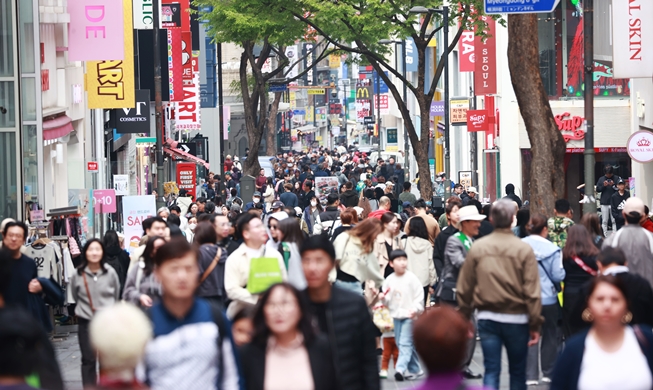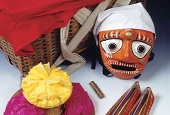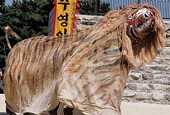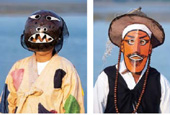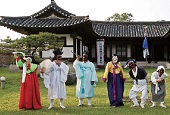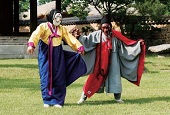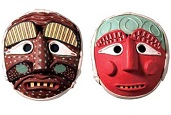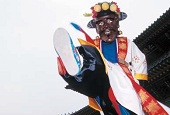-
 Korea.net's 24-hour YouTube channel
Korea.net's 24-hour YouTube channel- NEWS FOCUS
- ABOUT KOREA
- EVENTS
- RESOURCES
- GOVERNMENT
- ABOUT US
- 한국어
- English
- 日本語
- 中文
- العربية
- Español
- Français
- Deutsch
- Pусский
- Tiếng Việt
- Indonesian
The Lion Dance
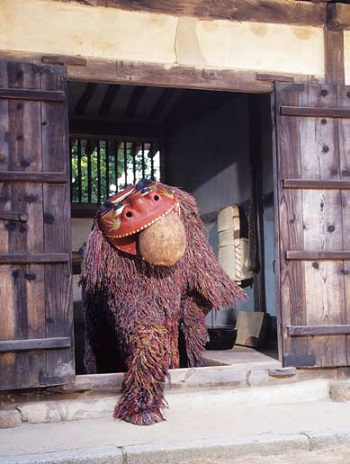
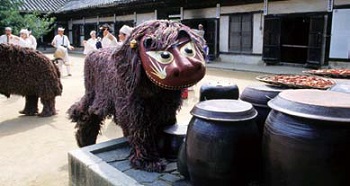
(Top) A lion comes out of the kitchen holding a bowl made from a gourd in its mouth; (bottom) A lion steps up to the terrace where jars of fermenting pastes and vegetables are stored to cleanse it of evil spirits.
The Bukcheong lion dance has been handed down through the generations in the region of Bukcheong in South Hamgyeong Province, in what is now North Korea. Originally, this lion dance was performed as part of a ritual to expel evil spirits and to pray for good fortune on the night of the first full moon of the year. A variety of folk practices were held every year during the first lunar month to pray for a bountiful harvest and for the prosperity of the village.
The Bukcheong lion dance is commonly categorized as a folk play rather than a strict mask dance, per se. It involves only four or five masked performers and does not include the core items found in other masked performances, such as the biting satire of the apostate monk or the criticisms of a patriarchal society based on the strict notions of male superiority.
Instead, it features powerful and dynamic lion-like moves followed by other kinds of dance, such as a dance with two women, a dance with children on an adult's shoulders, the dance of a hunchback, a sword dance and a simple dance that features rhythmical shoulder and wait movements, called a neokduri dance. The lion dance is also unique for being performed to jaunty melodies played on a six-holed bamboo recorder with a distinctive tone, called a tungso.
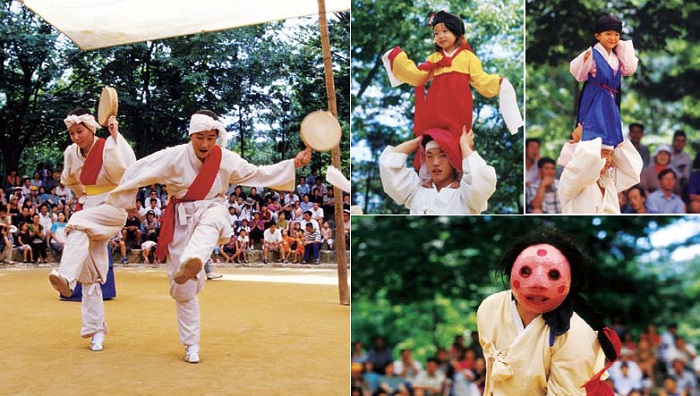
(Left) The geosa dance; (top) The child's dance, where the youngster stands on the shoulders of an adult; (bottom) The hunchback's dance.
The lion itself normally requires two dancers, one operating the head and the front legs and the other in the rear representing the hind legs. The head of the lion is made from paper and the body is assembled with a wool-laced net through which the dancers can see out.
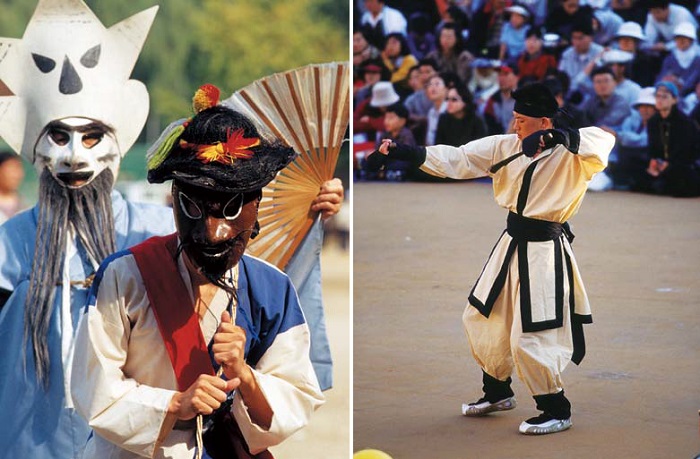
(Left) The nobleman and the servant, from the Aewonsong dance; (right) The sword dance.
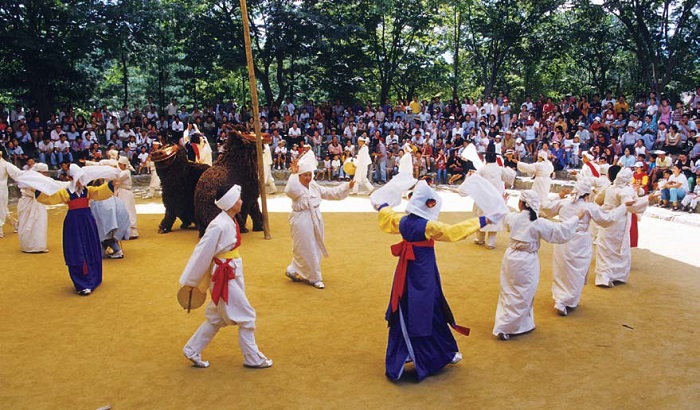
The dancers come to the stage one last time after their performance.
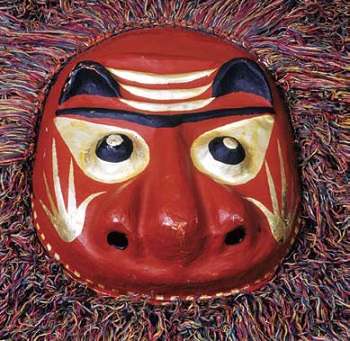
The lion mask.
The Bukcheong lion dance uses various masks, including the lion mask itself and then masks for the nobleman, the servant, the hunchback and the two runners. Characters such as the child dancers, the female clown, the monk, the doctor and the leaned man all appear unmasked.
Among the mask dances currently being transmitted down through the generations in modern-day Korea, the mask dances from Bongsan, Gangnyeong, Eunyul, Suyeong, Tongyeong and Hahoe all include a lion. While not regarded as the main element of mask dances generally, the lion dance itself has long been performed to ward off bad luck and to pray for good fortune.

(Left) The lion standing up; (center) The lion 'bowing' with his jaw to the ground; (right) The lion stepping forward.

(Left) The lion eating his prey; (right) Two lions 'kissing.'
Masks of the Bukcheong Lion Dance
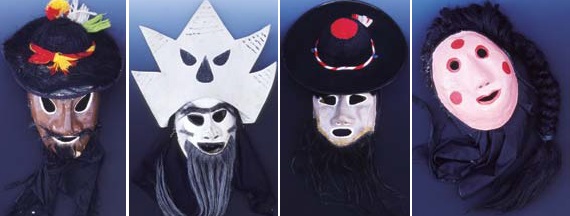
(From left) The servant; The nobleman; The runners; The hunchback.
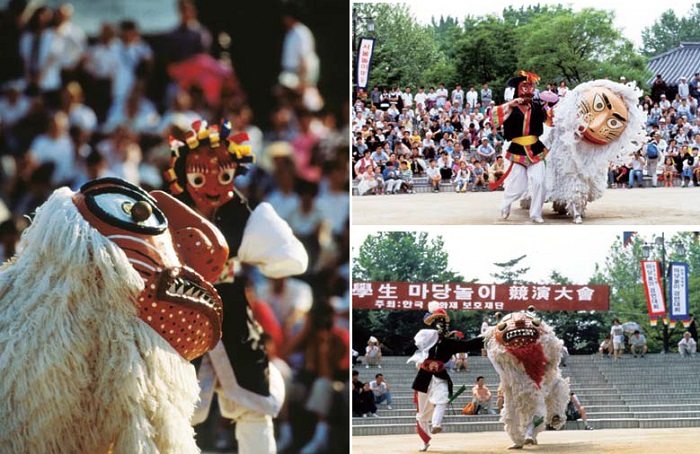
(Left) The lion dance as part of the Bongsan mask dance; (right, top) The lion dance as part of the Eunyul mask dance; (right, bottom)The lion dance as part of the Gangnyeong mask dance.
* This series of article has been made possible through the cooperation of the National Research Institute of Cultural Heritage. (Source: Intangible Cultural Heritage of Korea)
Most popular
- First hearing-impaired K-pop act hopes for 'barrier-free world'
- Expats could account for 7% of population in 20 years: report
- 'Mad Max' director impressed by 'cinema-literate' Korean viewers
- Show in Italy to present 'thought-filled' Korean craftworks
- Romanian presidential couple visits national cemetery




